How do you choose a new TV? A good first step would be to check the specifications. Then you can decide which TV is most suitable for you. In this article, we compare two TV models from the same manufacturer. Continue reading to find out which TV to choose — Vizio MQ6 vs MQ7.
Vizio MQ6 vs MQ7 – Quick Intro
The Vizio MQ6 and MQ7 belong to the Vizio M-Series. This series consists of mid-range TVs that offer plenty of useful features. These two models have lots of similarities like the panel type, the same processor, refresh rate, and resolution.
But the MQ7 model is better than the MQ6 in general. This especially refers to the local dimming feature, number of HDMI ports, color accuracy, and speaker quality. However, the MQ6 model has its own qualities. So, let’s dig deeper into this comparison. But first, let’s compare their main features in the table below.
| Features | Vizio MQ6 | Vizio MQ7 |
|---|---|---|
| Screen Sizes | 43, 55, 65, 70, and 75 inches | 50, 55, 58, 65, 70, and 75 inches |
| Screen Panel | VA | VA |
| Processor | IQ Active Processor | IQ Active Processor |
| Operating System | SmartCast 51.8 | SmartCast 1.50 |
| Refresh Rate | 60 Hz | 60 Hz |
| Variable Refresh Rate | Yes | Yes |
| Resolution | 4K | 4K |
| Contrast Ratio | 8,516: 1 | 7,570: 1 |
| HDMI Ports | 3 | 4 |
| USB Ports | 1 | 1 |
| WiFi and Bluetooth | Yes | Yes |
| Speakers | 10 watts x 2 | 10 watts x 2 |
| Price | Check Price on Amazon | Check Price on Amazon |
Vizio MQ6
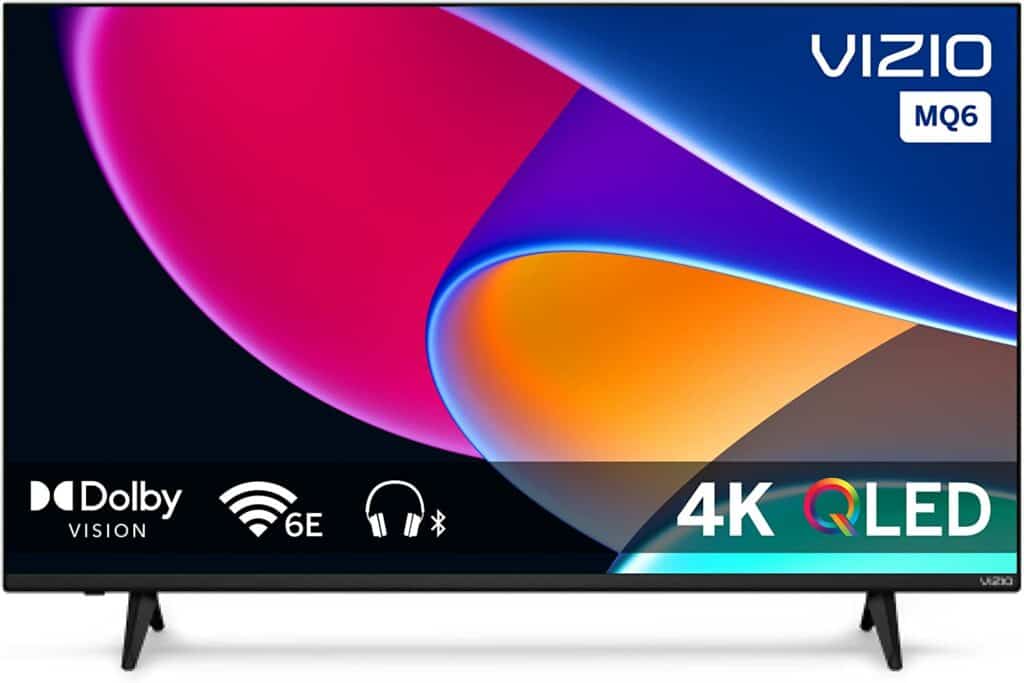
Pros:
- Wi-Fi and Bluetooth connectivity
- Great native contrast ratio
- HDMI 2.1 ports
- Easy-to-use operating system
Cons:
- No local dimming feature
- HDR brightness
Vizio MQ7
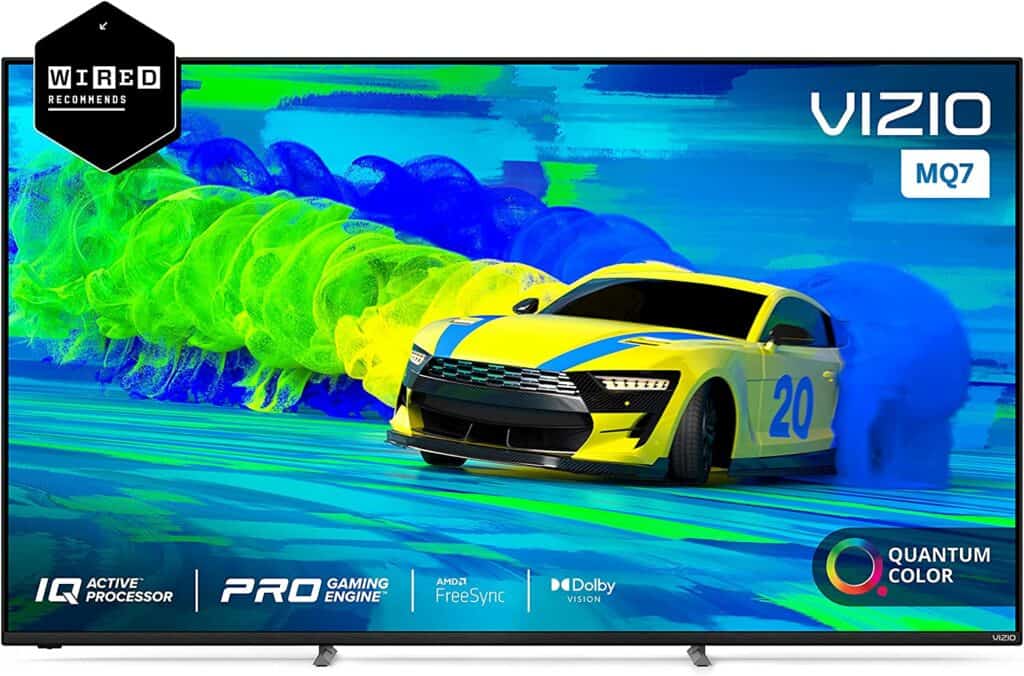
Pros:
- Motion handling
- Color accuracy
- Plenty of HDMI ports
- Good speakers
Cons:
- Poor viewing angles
- No HDMI 2.1 ports
Features Face to Face
Panel Technology
The Vizio MQ6 and MQ7 come with VA panels. This type of panel is best known for its excellent contrast ratios. These two Vizio models are no exception since they have excellent native contrast ratios. It means they are a good choice for watching dark scenes in dark environments.
While they excel at contrast, VA panels have bad viewing angles. The colors shift as soon as you move from the center. Some models provide slightly better viewing angles, but all VA panels generally have narrow viewing angles.
Winner: Draw
Image Processor
The TV models in our comparison come with the IQ Active Processor. The MQ6 additionally has V-Gaming Engine, and the MQ7 has ProGaming Engine. Both of these do the task of improving your gaming experience.
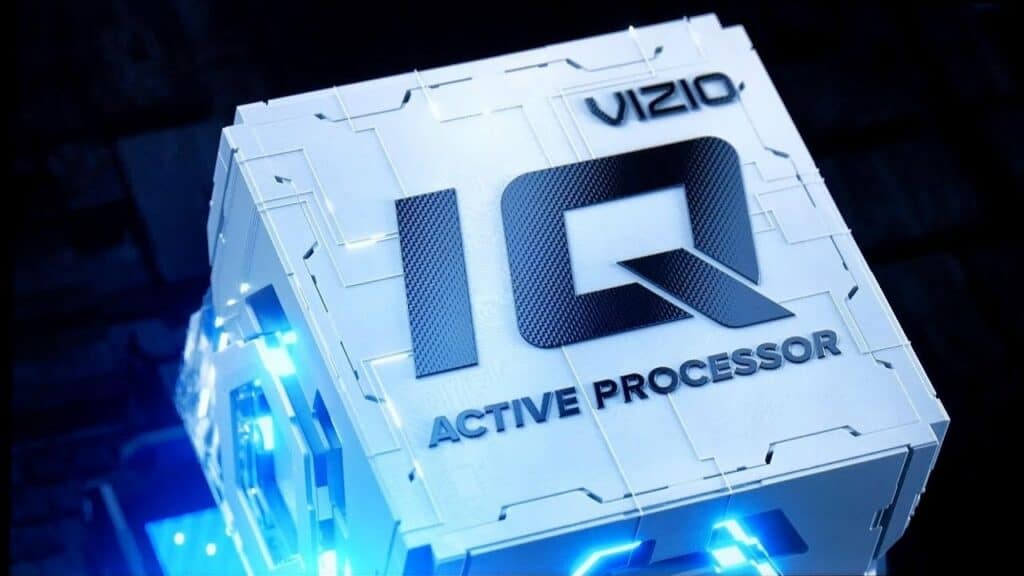
The processor enhances contrast and details. They also both come with the Spatial Scaling Engine for upscaling the image quality to near-4K resolution.
Winner: Draw
Motion Technology
The Vizio MQ6 and MQ7 have decent motion handling. They have okay response time and input lag. The good thing is that they support variable refresh rates, but the refresh rate is only 60 Hz.
| Performance features | Vizio MQ6 | Vizio MQ7 |
|---|---|---|
| Refresh rate | 60 Hz | 60 Hz |
| Variable refresh rate | Yes | Yes |
| Response time | 13.6 ms | 13.3 ms |
| Input lag 1080p at 60 Hz | 12.2 ms | 11.2 ms |
| Input lag 4K at 60 Hz | 12.2 ms | 11.2 ms |
| Input lag 1440p at 60 Hz | 12.0 ms | 11.1 ms |
The MQ7 model is slightly better at motion handling since the MQ6 can have some blur in scenes involving fast-moving objects. However, both have some black smearing in dark transitions.
Winner: Vizio MQ7
Picture Quality
These two TV models support 4K resolution at 60 Hz. However, the MQ6 model can have some blur displaying 4K videos, unlike the MQ7, which is perfect at displaying 4K content.
1080p and 720p resolutions are displayed well on both models. But they both have issues with upscaling lower image quality. In the case of 480p resolution, the MQ6 stretches the image and doesn’t apply the right aspect ratio. The MQ7 model also struggles with 480p, but not as much as the MQ6.
| Resolution | Vizio MQ6 | Vizio MQ7 |
|---|---|---|
| 8K | No | No |
| 4K/144Hz | No | No |
| 4K/120Hz/4:4:4 | No | No |
| 4K/120Hz | No | No |
| 4K/60Hz/4:4:4 | Yes | Yes |
| 4K/60Hz | Yes | Yes |
| 1440p/144Hz | No | No |
| 1440p/120Hz | No | No |
| 1440p/60Hz | Yes (forced resolution required) | Yes (forced resolution required) |
| 1080p/144Hz | No | No |
| 1080p/120Hz | No | No |
| 1080p/60Hz/4:4:4 | Yes | Yes |
Contrast Ratio / Black Level
Due to their VA panels, the MQ6 and MQ7 have excellent native contrast ratios. The MQ6 model has a native contrast ratio of 8,516: 1, while the MQ7 has a ratio of 7,570: 1. Therefore, they display deep blacks very well, which is perfect for watching dark scenes in dimmed or dark rooms.
Winner: Vizio MQ6
Local Dimming
The good news is that the native contrast ratio can be significantly improved on TV models that have the local dimming feature. Unfortunately, the Vizio MQ6 doesn’t support this feature.
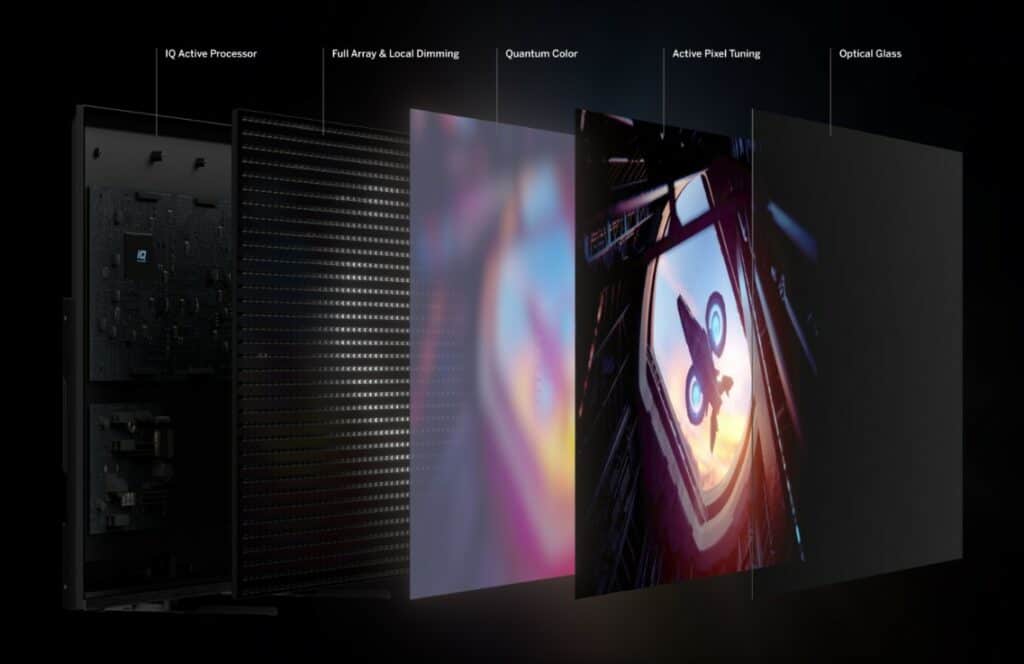
The MQ7, on the other hand, has a full-array backlight and comes with this feature. It means that its already excellent native contrast ratio can be further improved. The MQ7’s contrast ratio can be improved up to 12,743: 1.
Winner: Vizio MQ7
Peak Brightness
The maximum brightness on the Vizio MQ6 model reaches around 310 Nits. The MQ7 has slightly better brightness, but it depends on the local dimming zones. Larger models have more dimming zones, so they can reach a maximum brightness of up to 600 Nits. The smaller models have fewer zones and a maximum brightness of up to 400 Nits.
They have some differences when it comes to SDR and HDR brightness. The MQ6 model has bad SDR brightness. So, it doesn’t excel in bright rooms and struggles with glare. The MQ7 performs a bit better. The main difference is that it gets bright enough to fight the glare because it has better overall brightness.
Unfortunately, both models have disappointing HDR brightness and the highlights don’t stand out.
Winner: Vizio MQ7
Color
The pre-calibration color accuracy is not so great on the Vizio MQ6. The colors and white balance are off. Fortunately, this changes after calibration and both models have great accuracy. The white balance and gamma are great. The colors are fantastic on the MQ7. But they can be a bit off on the MQ6 because they were so off before calibration.
Both have decent color volume and a wide color gamut. The gradient handling is excellent on both models, but there is some banding in darker colors.
Winner: Vizio MQ7
Viewing Angle
When you choose a TV with a VA panel, what you can expect is a narrow viewing angle. These panels are known for their poor viewing angles and the MQ6 and MQ7 are no exception. When you move from the central position to the sides, you can expect image quality to drop very fast.
| Viewing angle | Vizio MQ6 | Vizio MQ7 |
|---|---|---|
| Color washout | 21 deg. | 23 deg. |
| Color shift | 19 deg. | 18 deg. |
| Brightness loss | 29 deg. | 28 deg. |
| Black level raise | 14 deg. | 14 deg. |
| Gamma shift | 14 deg. | 12 deg. |
As we can see in the table, the color washout and color shift appear at about 20 degrees from the center. And gamma shift and black level raise appear even sooner.
Winner: Draw
Reflections / Anti-Glare
The MQ6 and MQ7 have good reflection handling. Both can handle some light in the room, but should not be placed opposite a window or direct light source. However, the MQ6 model falls behind a bit due to its lower peak brightness.
Winner: Vizio MQ7
Sound Quality
The MQ6 and MQ7 each come with two 10-watt speakers. They have an okay frequency response. The dialogues are clear and loud; the bass is not very good, though. The MQ7 has a slightly better bass.
Either way, if you want a full cinematic experience, we recommend that you connect a soundbar and a subwoofer.
Winner: Vizio MQ7
Smart TV Platform (Operating System)
Vizio TVs come with the SmartCast platform. The MQ6 comes with SmartCast version 51.8, while the MQ7 comes with SmartCast version 1.50. Both versions are smooth and easy to use. However, you could experience some bugs. If your SmartCast is not working, there are ways to fix it.
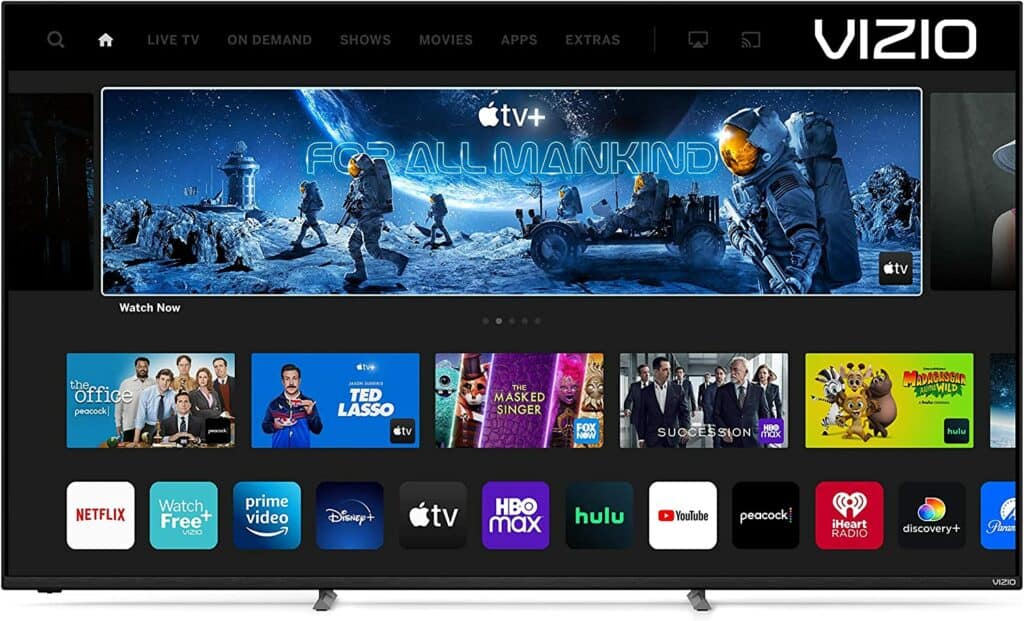
What differentiates this platform from other platforms is that its apps are web-based. This is the reason why the interface might seem a bit slower. So, you can’t install new apps, but you can use the pre-installed ones.
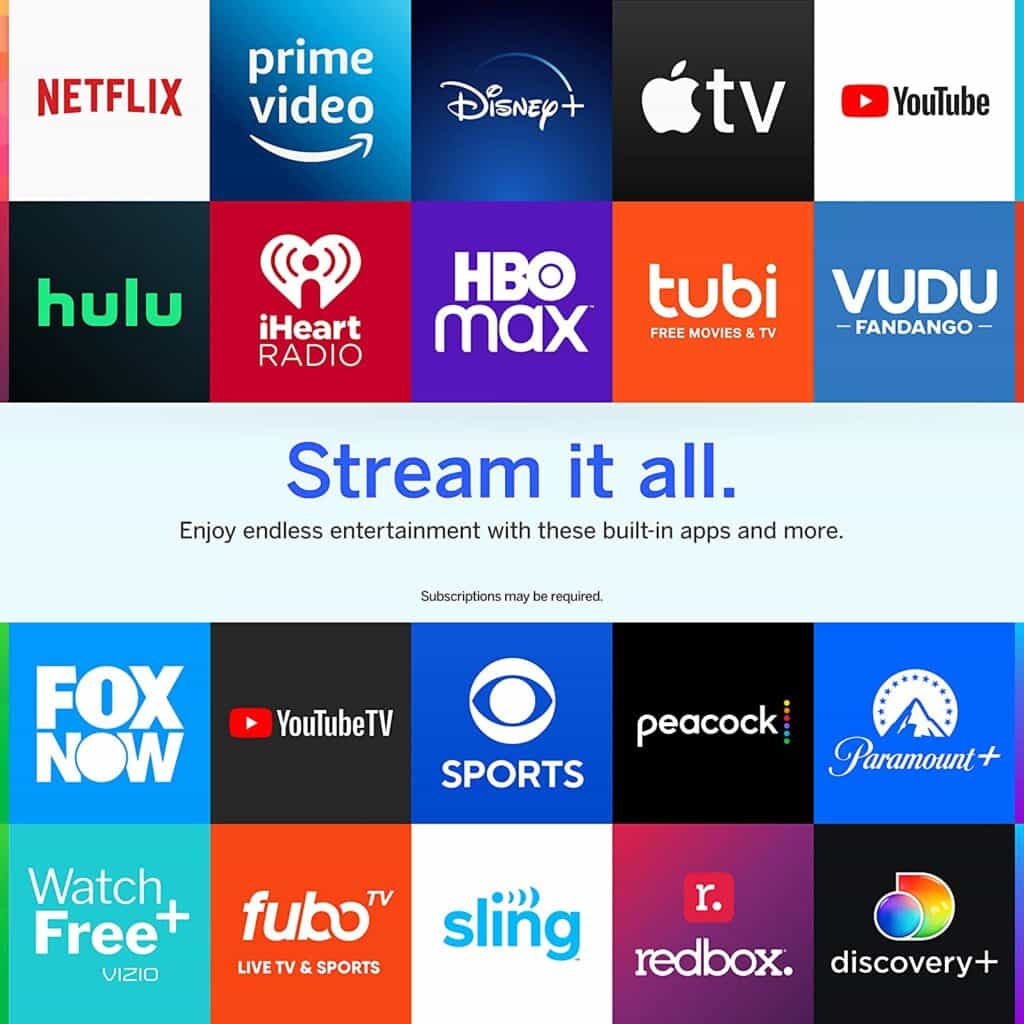
The good news is that there is plenty of apps, and you can cast anything you want from your smartphone. The downside is that this platform, just like most of the platforms, has ads.
Winner: Draw
Connectivity
Inputs
If you want to use the full capabilities of the devices such as Xbox Series X/S, Play Station 5, or send a 4K at 120 Hz signal, you need HDMI 2.1 ports. In this Vizio MQ6 vs MQ7 battle, only the MQ6 model supports this HDMI type. Even though the MQ7 model was advertised to have HDMI 2.1 ports, in reality, it supports only HDMI 2.0.
| Inputs | Vizio MQ6 | Vizio MQ7 |
|---|---|---|
| HDMI ports | 3 | 4 |
| USB ports | 1 | 1 |
| Ethernet | Yes | Yes |
| Digital audio output | Yes | Yes |
| 3.5 mm jack | No | Yes |
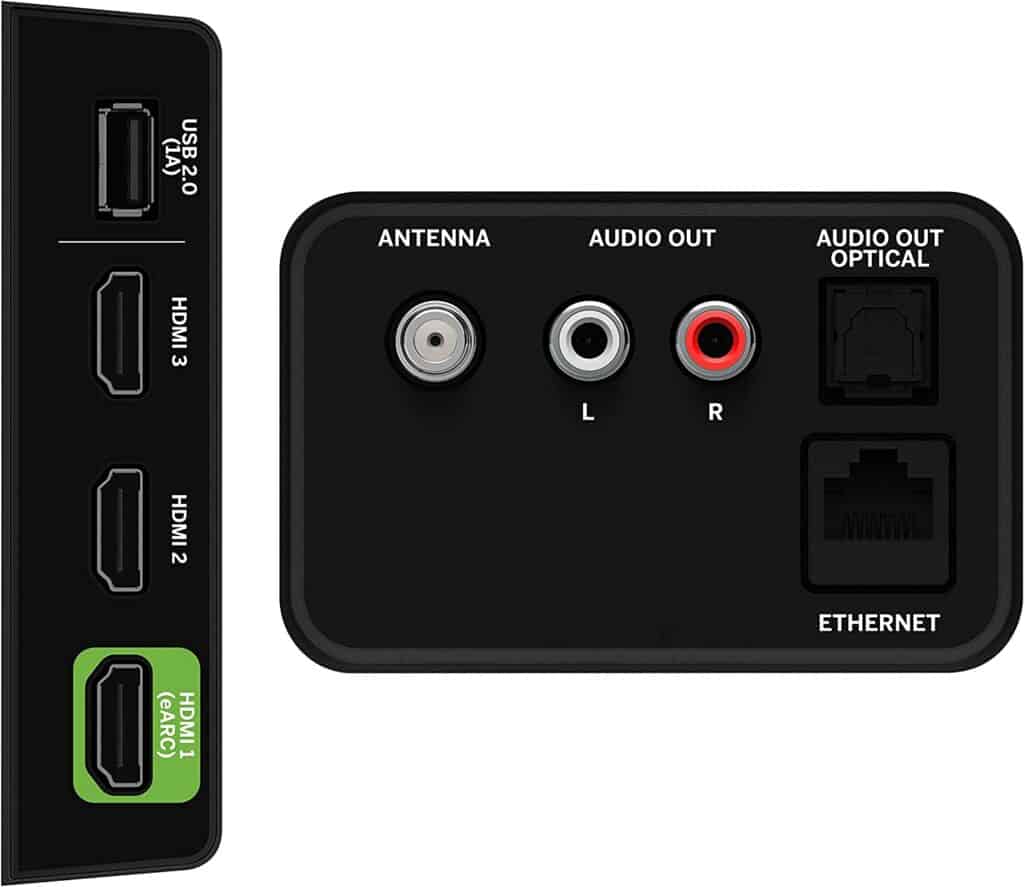
The Vizio MQ6 has three HDMI ports that all support HDMI 2.1. The MQ7 models have four HDMI ports, and all of them support HDMI 2.0. Each of them has only one USB 2.0 port since they don’t support USB 3.0. On top of that, the MQ6 model doesn’t have a 3.5 mm jack.
Winner: Vizio MQ6
Voice Assistants
Since they both belong to the same series, they work with the same voice assistants.
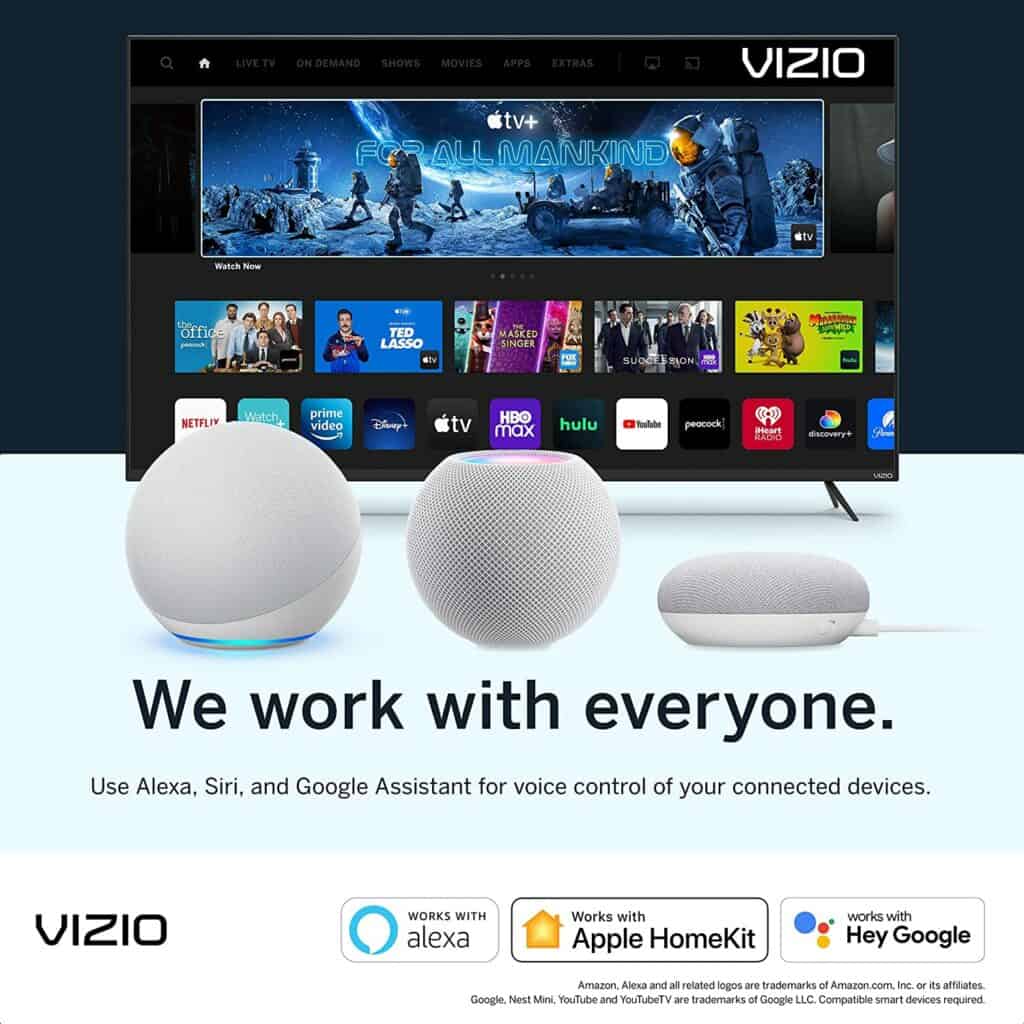
They work with both Amazon Alexa and Google Assistant. They are also compatible with the Apple HomeKit.
Winner: Draw
Wireless Technologies
Both of these models support WiFi connectivity, but they have different protocols. The MQ6 supports WiFi 6E, whereas the MQ7 supports WiFi 5.
They also support Bluetooth connectivity, but the MQ7 supports the 5.0 version, while the MQ6 supports the 5.2 version.
Winner: Vizio MQ6
Related Read: Comparison of Vizio M Series vs V Series
Conclusion
Which TV model is better in this Vizio MQ6 vs MQ7 comparison? Let’s see what their best features are.
The Vizio MQ6 has a fantastic native contrast ratio which is ideal for dark scenes, especially when watched in dark environments. This model has great WiFi connectivity and Bluetooth connectivity. So, you can connect any Bluetooth device you want.
The Vizio MQ7 has great motion handling, so it is a good choice for gaming and watching sports. Good speakers and solid bass provide a good audio experience. On top of that, this model has great color accuracy.